#shirley yamaguchi
Photo







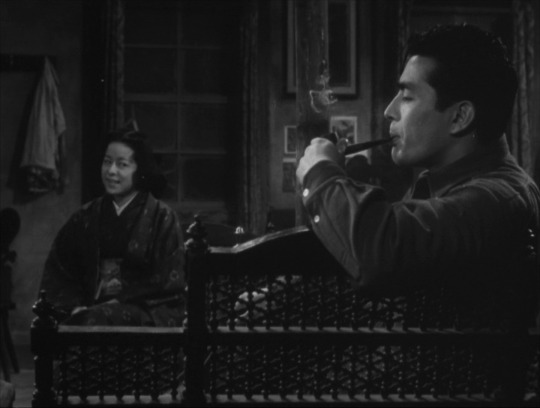

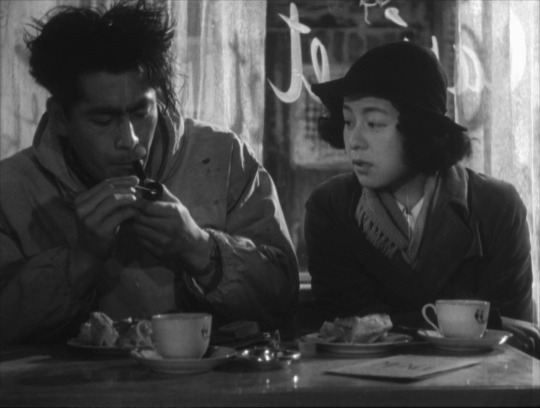
Scandal (Akira Kurosawa, 1950)
#films watched in 2022#Scandal#Akira Kurosawa#Shubûn#Shubun#seis#1950#Toshirô Mifune#Shirley Yamaguchi#Takashi Shimura#drama#mask#Yôko Katsuragi#Noriko Sengoku#Toshiro Mifune#black and white#back#smoke#windows#law
230 notes
·
View notes
Photo

#Yoshiko Yamaguchi#山口 淑子#Li Hsiang-lan#李香蘭#Shirley Yamaguchi#Ken Domon#asia#土門 拳#photographer#qipao#cheongsam
12 notes
·
View notes
Photo

#house of bamboo#robert ryan#robert stack#shirley yamaguchi#cameron mitchell#brad dexter#sessue hayakawa#biff elliot#sandro giglio#elko hanabusa#samuel fuller#1955
7 notes
·
View notes
Photo





House of Bamboo (Samuel Fuller, 1955), cinematography by Joseph MacDonald
#Samuel Fuller#House of Bamboo#Joseph MacDonald#cinematography#CinemaScope#DeLuxe Color#Robert Ryan#Robert Stack#Shirley Yamaguchi#1950s film#Yoshiko Yamaguchi#color film noir#film noir#crime film
8 notes
·
View notes
Text

Kazuo Hasegawa and Li Xianglan (Yoshiko Yamaguchi) in Song of the White Orchid (白蘭の歌, 1939)
9 notes
·
View notes
Text
7 settembre … ricordiamo …
7 settembre … ricordiamo …
#semprevivineiricordi #nomidaricordare #personaggiimportanti #perfettamentechic
2022: Marsha Hunt, Marsha Virginia Hunt, attrice statunitense, attiva sul piccolo e grande schermo fin dal 1935 – una carriera che dura da quasi 80 anni apparendo un numerosi film. Marsha sposò il regista Jerry Hopper nel 1938. Divorziarono nel 1943. Sposò il suo secondo marito, lo sceneggiatore e regista radiofonico Robert Presnell Jr. nel 1946. Hunt era incinta e molto malata durante le riprese…
youtube
View On WordPress
#7 settembre#7 settembre morti#Ben Piazza#Dick Moore#Dickie Moore#John Richard Moore#Li Xianglan#María Montez#Marsha Hunt#Marsha Virginia Hunt#Ricordando ..#Ricordiamo#Sergio Endrigo#Sheila Susan White#Sheila White#Shirley Yamaguchi#Virgilio Riento#Virgilio Riento d&039;Armiento#Vivi James#Vivi Janis#Vivi Janiss#Vivi Jannis#Yoshiko Yamaguchi#Youtube
0 notes
Text

Walking home from school just before her 10th birthday, Tura Luna Pascual Yamaguchi (Tura Satana) was reportedly gang raped by five men. According to Tura, her attackers were never prosecuted, and it was rumored that the judge had been paid off. She reports that this prompted her to learn martial arts, such as aikido and karate. Over the next 15 years, Satana tracked down each rapist and exacted revenge. "I made a vow to myself that I would someday, somehow get even with all of them," she said years later. "They never knew who I was until I told them." Around this time, she formed a gang, "the Angeles," with Italian, Jewish, and Polish girls from her neighborhood. In an interview with Psychotronic Video, Satana said, "We had leather motorcycle jackets, jeans and boots...and we kicked butt." Because of frequent delinquency, she was sent to reform school. When she was 13, her parents arranged her marriage to 17-year-old John Satana in Hernando, Mississippi, which lasted nine months.
Satana moved to Los Angeles and by age 15, using fake identification to hide the fact she was a minor, began burlesque dancing. She was hired to perform at the Trocadero nightclub on the Sunset Strip, and became a photographic model for, among others, silent screen comic Harold Lloyd, whose photos of her appear in "Harold Lloyd's Hollywood Nudes in 3-D."
Satana returned to Chicago to live with her parents and started dancing at the Club Rendevouz in Calumet City, where she was known as Galatea, "the Statue that Came to Life." She was offered a raise to become a stripper.
"I started out as an interpretive dancer, but I was offered more money if I took my clothes off, so I did. I started dancing at the age of 13 years old. I became a professional dancer at the age of 15 years old. If the owners of the clubs I had worked in ever knew that I was only 15, I think that they would have had a heart attack."
After singer Elvis Presley saw Satana perform at Chicago's Follies Theater, the two began a romantic relationship that some reports say ended in a marriage proposal she declined (though she reportedly kept the ring). Satana eventually became a successful exotic dancer, traveling from city to city. She credited Lloyd with giving her the confidence to pursue a career in show business: "I saw myself as an ugly child. Mr. Lloyd said, 'You have such a symmetrical face. The camera loves your face...You should be seen.'"
Satana's acting debut role was a cameo as Suzette Wong, a Parisian prostitute in the film "Irma la Douce" (1963), which starred Jack Lemmon and Shirley MacLaine. Her next role was as a dancer in "Who's Been Sleeping in My Bed?" (1963), which starred Dean Martin and Elizabeth Montgomery; Soon after, Satana appeared in the television shows "Burke's Law" and "The Man from U.N.C.L.E." Satana then starred as Varla in the 1965 Russ Meyer film "Faster, Pussycat! Kill! Kill!"—a very aggressive and sexual female character for which she did all of her own stunts and fight scenes. Renowned film critic Richard Corliss called her performance "the most honest, maybe the one honest portrayal in the Meyer canon and certainly the scariest." Originally titled "The Leather Girls", the film is an ode to female violence, based on a concept created by Meyer and screenwriter Jack Moran. Both felt at her first audition that Satana was "definitely Varla." The film was shot on location in the desert outside Los Angeles during days when the weather was more than 100 degrees Fahrenheit and freezing nights, with Satana clashing regularly with teenage co-star Susan Bernard due to Bernard's mother's reportedly disruptive behavior on the set. Meyer said Satana was "extremely capable. She knew how to handle herself. Don't f*ck with her! And if you have to f*ck her, do it well! She might turn on you!"
Satana was responsible for adding key elements to the visual style and energy of the production, including her costume, makeup, usage of martial arts, dialogue and the use of spinning tires in the death scene of the main male character. She came up with many of the film's best lines. At one point the gas station attendant was ogling her extraordinary cleavage while confessing to a desire to see America. Varla replied "You won't find it down there, Columbus!" Meyer cited Satana as the primary reason for the film's lasting fame. "She and I made the movie," said Meyer. Meyer reportedly later regretted not using Satana in subsequent productions.
"I took a lot of my anger that had been stored inside of me for many years and let it loose. I helped to create the character Varla and helped to make her someone that many women would love to be like."
Santana legally owned her likeness and image. So, whenever Russ Meyer wanted to change the artwork or rerelease "Faster, Pussycat! Kill! Kill!," he had to get her permission and sometimes pay her all over again. (Wikipedia/IMDb)
295 notes
·
View notes
Text
2024 To Read List (plus reasons as needed):
TW for Columbine/school unaliving mention and conversion mentions (homophobia). If I've missed your trigger let me know so I can fix the tags accordingly.
All book titles connected to their respective Goodreads pages.
A Mother's Reckoning: Living in the Aftermath of Tragedy by Sue Klebold - Reading this out of pure spite in response to an-in my opinion- unfair video about Sue. Won't link it so the guy doesn't get harassed but it made my blood boil.
Side note: I have a special interest in Columbine but I in no way am interested in joining Tumblr's TCC. Eric and Dylan should not be fangirled over imho.
Emily Wilde's Encyclopedia of Faeries by Heather Fawcett - I like faerie books
Murder Your Employer: The McMaster's Guide of Homicide by Rupert Holmes - No particular reason; saw it at B&N and thought it seemed interesting. R.L. Stine apparently liked it so hey, why not?
We Sold Our Souls by Grady Hendrix - I've been looking at this author for a while, and I own some of his books on audible, but I've been trying to get back into physical media
My Next Life as a Villainess: All Routes Lead to Doom by Satoru Yamaguchi, illustrated by Nami Hidaka, and translated by Shirley Yeung - Whole series, but I'm on the second book. One of my all time favorite animes. Can't wait for the Switch game to come out in NA.
Fire Dancer by Catherine Jones Payne - I met this author about 2 years ago at a convention and she is awesome. I'm almost done with her Breakwater series, which I also recommend if you like mermaids.
Split Image: The Life of Anthony Perkins by Charles Winecoff - Perkins has been said to be bisexual, but based on further research I genuinely think that he might have been a homosexual. This topic surrounding him has interested me for a while. especially since I have reason to believe that this came from conversion therapy.
RWBY: After the Fall by E.C. Meyers - I love RWBY and also fanfiction reasons. I also got Before the Dawn and Roman Holiday for similar reasons.
The Hunger Games by Suzanne Collins - Okay so I read the first book around the time the first movie came out but I only watched the movies past that, and I suddenly got hooked back in by people mentioning small details that Collins wrote, as well as Panem Academy and Emhahee on tiktok
#to read#tbr list#booklr#bookblr#books#to be read#book tbr#tbr pile#tbr#tcc columbine#columbine 1999#columbine massacre#columbine school shooting#columbine high massacre#sue klebold#emily wilde’s encyclopaedia of faeries#faeries#heather fawcett#murder your employer#rupert holmes#grady hendrix#we sold our souls#my next life as a villainess#my next life as a villianess all routes lead to doom#catherine payne jones#breakwater#fire dancer#anthony perkins#psycho 1960#norman bates
5 notes
·
View notes
Text
House of Bamboo
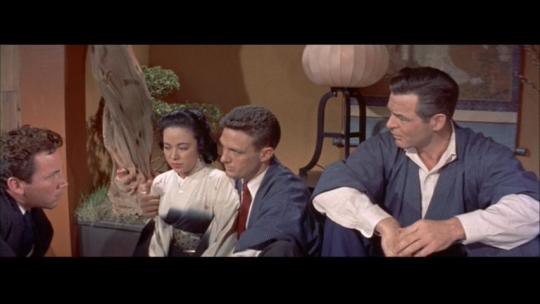
Although at times formally beautiful, HOUSE OF BAMBOO (1955, Criterion Channel) is one of writer-director Samuel Fuller’s more staid pictures. There’s nothing as vertiginous as the tight closeups in films like THE CRIMSON KOMONO (1959) or UNDERWORLD, U.S.A. (1961) or the dizzying moving camera in PARK ROW (1952), PICKUP ON SOUTH STREET (1953) or THE NAKED KISS (1964). Maybe that’s a function of the film’s being a remake (of William Keighley’s 1948 THE STREET WITH NO NAME) or of Fuller’s attempt to fit into the studio system. Robert Stack is a low-level crook who infiltrates Robert Ryan’s criminal band of ex-GIs pulling jobs in post-war Japan. Shooting in CinemaScope for only the second time, Fuller makes good use of his Tokyo locations to fill the screen with detail, but he only really cuts loose in a few scenes. There are two dazzling tracking shots, one as Shirley Yamaguchi (as a friend’s widow posing as Stack’s kept woman) goes shopping and is shunned by more upright women and another as Ryan’s gang robs a factory. Fuller also stages a fascinating moment of cultural clash when the traditional Japanese dance at a party turns into a wild jitterbug, with Japanese women in western attire dancing with kimono-clad Caucasian gangsters. And the final shoot-out in a rooftop amusement park is filled with fascinating details. But the story moves more slowly than usual in a Fuller film. Ryan is fascinating as the multi-layered gang boss, with just a hint of homosocial desire in the way he pits right-hand man Cameron Mitchell against Stack. Mitchell is effective as the gang’s chief hothead, but Stack plays with jaw so firmly clenched his character barely registers as human. Sessue Hayakawa is on hand (albeit dubbed by Richard Loo) as a Japanese police captain, while Biff Elliott and Robert Quarry are gang members. DeForest Kelley’s performance as another was long thought to be a walk-on when the film was only available in a pan-and-scan TV version. When 20th Century-Fox finally issued a restored CinemaScope print, he suddenly emerged as a major player.
2 notes
·
View notes
Text

Day Six- Film: Japanese War Bride
Release date: Jan 29th, 1952
Studio: 20th Century Fox
Genre: drama
Director: King Vidor
Producer: Joseph Bernhard, Anson Bond
Actors: Shirley Yamaguchi, Don Taylor
Plot Summary: Jim, an American soldier, meets Tae, a Japanese nurse, while recovering from injuries on the battlefield in Korea. They fall in love, marry, and move to the U.S. Both Jim’s family and the entire community have a hard time accepting Tae. Racism and the wounds of WWII loom over everything.
My Rating (out of five stars): ***
The message of this movie would get more stars than three, but the quality of the actual film knocks it down a few. It’s obvious the filmmakers meant well, but ultimately it is pretty ham-fisted.
The good:
It does TRY to offer some moral complexity. There are American characters, native Japanese characters, and even a local Californian Japanese American family. All have their very real scars from the war that complicate their interactions.
It TRIES to avoid simple stereotypes of Japanese people and at least ATTEMPT to flesh out characters
The actors playing Japanese characters were actually Japanese
The actress playing Tae was wonderful and very sympathetic
The character Jim was actually a sweet guy. He did sometimes treat her like a child, but honestly, it wasn’t too different than how he would have treated an American woman at the time.
The bad:
Lots of use of the word “J-p,” although it always came out of the mouths of racist characters. It was just startling, for example, to hear things like, “Oh, look at the little J-p baby. I must say, they are really cute.”
Some infantilizing of Tae.
The film acts like Jim is somehow emancipating her because he doesn't make her bow for him anymore.
Fran! Fran the sister-in-law! She was not only racist but just a horrible jealous person. I started making a running joke of yelling “Fran, you’re a cow!” whenever she spoke so I wouldn’t get so angry at her.
For me, this ultimately ended up being a very fascinating time capsule of the early post WWII years in America, even if it wasn't a great film. It was also apparently regarded as positive and helpful for Japanese “war brides” of the time, so big props for that!
1 note
·
View note
Video
youtube
Shirley Yamaguchi in 'Dear Soldier' 1944 山口淑子
0 notes
Text
§ 2.862. La casa de bambú (Samuel Fuller, 1955)

Más interesante de lo que en principio pudiera parecer. Choque de civilizaciones, principios contrapuestos, gustos, valores, formas, criterios... todos distintos, poco homogéneos y difícilmente reconducibles a un patrón común. Toda esa dicotomía se muestra muy claramente. La trama, sin embargo, queda algo más plana. No por su complejidad, que es notable, sino por su desarrollo, a veces errático, otras discontinuo.Interesantísimo Robert Ryan, un titán de la actuación que siempre da la talla. Aunque esos zapatos marrones que lleva no le pegan en absoluto. Muy interesante lo que manifiesta en el principio de la cinta: no somos gánster, no llevamos armas, somos educados en uno de los países más educados.También está fabuloso Robert Stack. Más humano quizá, menos distante que Ryan, pero bien trabajado en su personaje. La chica es Shirley Yamaguchi, y también interviene Brad Dexter, que parece raro no verle en películas del oeste.Muy bonita la historia de amor entre el policía y la chica japonesa. Y está bien tratado el desprecio que sufre ella por sus conciudadanos por ese hecho.La película me ha encantado. La vi hace años. Tengo apuntado que fue en julio de 2014, y en el apunte digo que es la segunda vez que la veía.Fuller es mucho Fuller. Es un directorazo con todas las letras, con una vida en sí misma de película. 20 cintas, todas ellas con su sello personal.
0 notes
Photo

Robert Ryan in House of Bamboo (Samuel Fuller, 1955)
Cast: Robert Ryan, Robert Stack, Shirley Yamaguchi, Cameron Mitchell, Brad Dexter, Sessue Hayakawa, Biff Elliot, Sandro Giglio, DeForest Kelley, Eiko Hanabusa. Screenplay: Harry Kleiner, Samuel Fuller. Cinematography: Joseph MacDonald. Art direction: Addison Hehr, Lyle R. Wheeler. Film editing: James B. Clark. Music: Leigh Harline.
More slickly made and visually spectacular than the typical Samuel Fuller movie, House of Bamboo was the product of his flirtation with a major studio, 20th Century-Fox. Made on location, it gives us some fine CinemaScope images of mid-1950s Tokyo, though it sometimes drifts away from the story into tourist mode to justify them, as in the scene in which the guy we know as Eddie Kenner (Robert Stack) tours a Buddhist temple on the pretext of having a clandestine meeting with the cops he's secretly working for. There's also not much reason why Sandy Dawson (Robert Ryan) should climb to the rotating observation platform on top of Matsuma department store for the final shootout, other than to provide some views of the city below. There's also an infusion of romance between Eddie and his supposed "kimona girl," as Sandy calls her, Mariko (Shirley Yamaguchi), that's a little more sugary than we expect of Fuller's men and women. Despite his concessions, the studio wasn't happy working with Fuller, and he went his independent way again. It's certainly not a bad movie -- it has action and suspense and fine work by cinematographer Joseph MacDonald -- but it feels a bit superficial.
0 notes
Photo
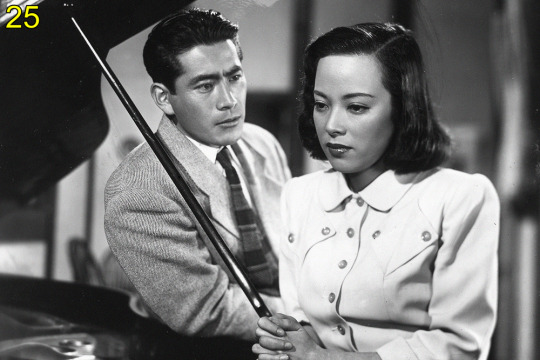
25. O Escândalo (醜聞, 1950), dir. Akira Kurosawa
#cinema#akira kurosawa#toshirô mifune#shirley yamaguchi#japanese cinema#1950s movies#classic movies#black and white movies#drama#painter#female singer#scandal#tabloid#lawsuit#press#photograph#shame#tuberculosis#greed#remorse#courtroom#gossip#morality#terminal illness#cinema icons#cult director#cinefilos
49 notes
·
View notes
Text
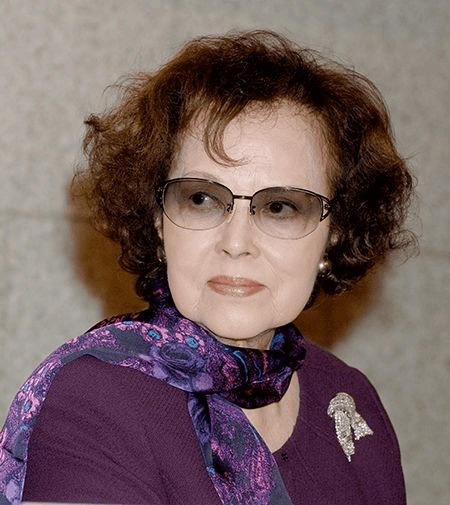
Yoshiko Yamaguchi (Shirley Yamaguchi or Li Xianglan) in 2006.
3 notes
·
View notes
